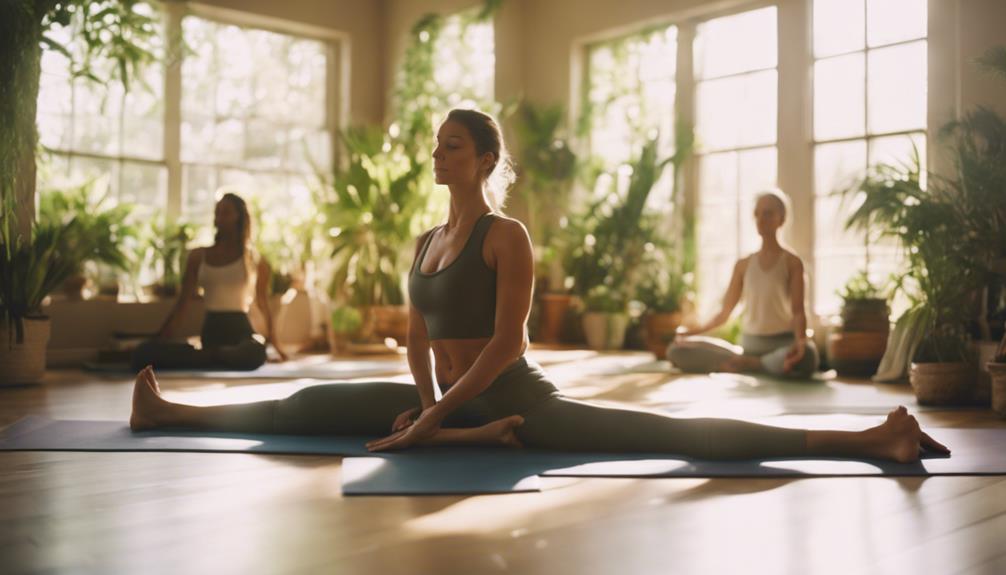How To Do The Yoga Headstand

Understanding the Yoga Headstand: An Overview
The yoga headstand, known as “Sirsasana” in Sanskrit, is often referred to as the “king of asanas.” It is a powerful inversion pose that offers numerous physical and mental benefits. In this article, we will explore how to do the yoga headstand properly, the advantages it brings, and essential tips for ensuring safety and effectiveness. Whether you are a seasoned yogi or a beginner, mastering the headstand can enhance your practice and overall well-being.
The Benefits of Practicing the Yoga Headstand
Before diving into how to do the yoga headstand, it’s vital to understand the benefits it offers. Practicing Sirsasana improves circulation, strengthens the arms, shoulders, and core, and enhances balance and coordination. It also stimulates the thyroid gland, aids in digestion, and can relieve stress and anxiety. Additionally, being inverted allows for a unique perspective, both physically and mentally, promoting clarity and focus. By incorporating this pose into your routine, you can enjoy these numerous advantages while deepening your yoga practice.
Preparing for the Yoga Headstand: Key Considerations
Preparation is crucial when learning how to do the yoga headstand. Start by ensuring you have a comfortable and quiet space to practice. It’s wise to warm up your body with poses that open the shoulders, strengthen the core, and improve balance. Poses like Downward Facing Dog, Dolphin Pose, and Plank can help build the strength needed for Sirsasana. Additionally, consider using props such as a folded blanket or a wall for support as you learn the pose. Always listen to your body, and if you have any neck or back injuries, consult a healthcare professional before attempting the headstand.
How to Do the Yoga Headstand: Step-by-Step Instructions
Now that you are prepared, let’s explore how to do the yoga headstand step-by-step.
Related Posts:
1. Start on Your Knees: Begin in a kneeling position on your mat. Interlace your fingers behind your head to form a supportive cradle for your neck.
2. Position Your Forearms: Place your forearms on the mat, ensuring they are shoulder-width apart. The back of your head should rest gently against your hands, forming a triangle shape.
3. Lift Your Hips: Tuck your toes under and lift your hips up, transitioning into a Downward Facing Dog position. Keep your elbows grounded and your head supported.
4. Walk Your Feet In: Gradually walk your feet towards your body, keeping your legs straight. This will help shift your weight onto your upper body.
5. Begin to Lift Your Legs: With control, engage your core and slowly raise your legs off the ground. Start by bending your knees and bringing them toward your chest.
6. Extend Your Legs Upward: Once you feel stable, extend your legs upward toward the ceiling. Keep your body aligned and your core engaged to maintain balance.
7. Hold the Pose: Breathe deeply and hold the headstand for 15-30 seconds. Focus on maintaining a straight line from your head to your toes.
8. Come Down Safely: To exit the pose, gently lower your legs back to the ground, returning to the Downward Facing Dog position before resting in Child’s Pose for a moment.
Common Mistakes to Avoid While Practicing the Headstand
When learning how to do the yoga headstand, it’s essential to avoid common mistakes that can lead to injury. Firstly, never place your weight solely on your neck; instead, distribute it evenly across your forearms and head. Avoid using momentum to kick up into the pose; instead, engage your core muscles for control. Additionally, don’t rush the process; building strength and balance takes time. If you find it difficult to balance, consider practicing against a wall or with a spotter until you gain confidence.
Modifications and Variations for the Yoga Headstand
While Sirsasana is a fantastic pose, it may not be suitable for everyone right away. If you’re mastering how to do the yoga headstand, consider practicing modifications such as the supported headstand using a wall or trying the tripod headstand, where your knees rest on your upper arms for additional support. You can also practice the forearm stand (Pincha Mayurasana) as a preparatory pose that builds strength and balance. Each variation allows you to work on the same principles of alignment and control without the full weight of your body on your head.
Incorporating the Yoga Headstand into Your Practice
Once you feel comfortable with how to do the yoga headstand, you can start incorporating it into your regular yoga practice. Aim to include it in your routine 1-2 times a week, ensuring you maintain a balanced practice by pairing it with grounding poses like Child’s Pose or Forward Bends afterward to counterbalance the inversion. Remember to focus on your breath and maintain a calm mind as you hold the pose. Over time, you will notice improvements in your strength, balance, and overall confidence in your practice.
Final Thoughts on Mastering the Yoga Headstand
In conclusion, learning how to do the yoga headstand can be a rewarding journey that enhances both your physical and mental practice. By understanding the benefits, preparing adequately, and following the proper techniques, you can safely master this powerful pose. Always practice with mindfulness, respect your body’s limits, and seek guidance if needed. Embrace the challenges and celebrate your progress, and soon you’ll find yourself confidently balancing in Sirsasana, reaping the rewards of this transformative pose. Happy practicing!Yoga For Fat People